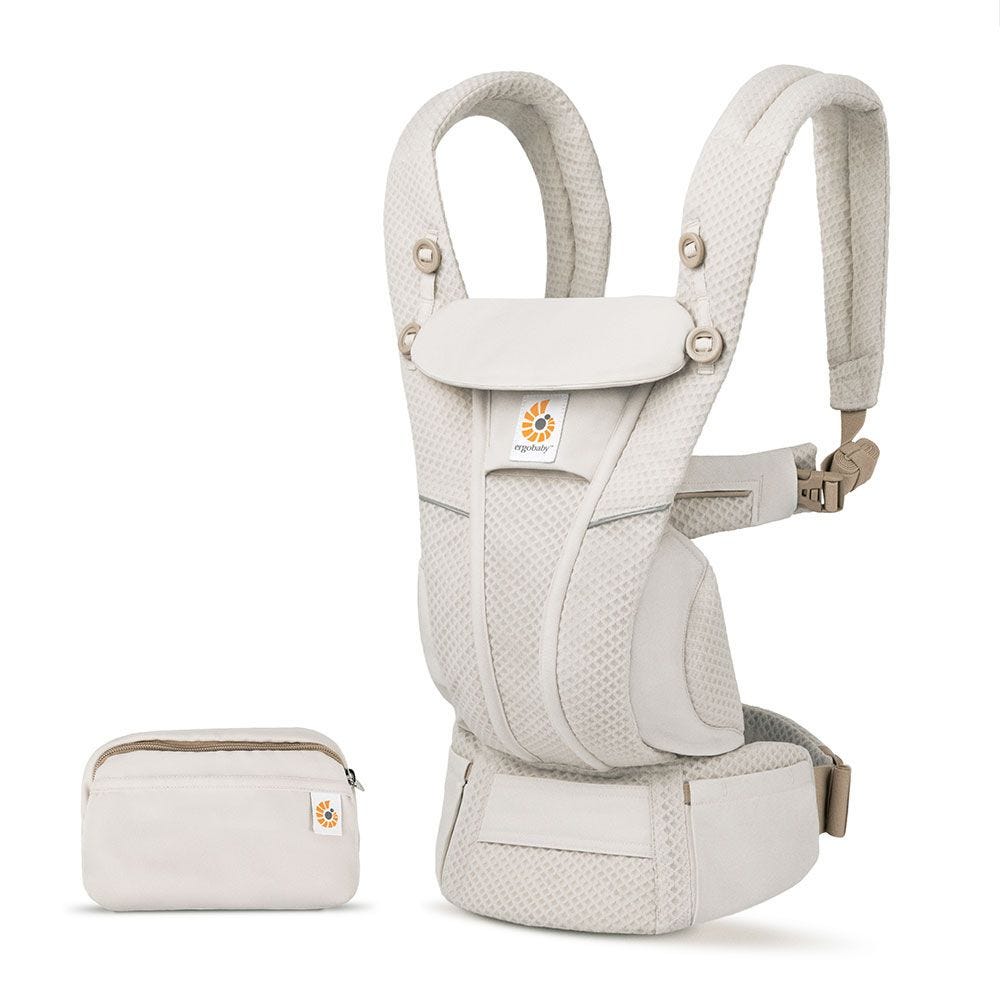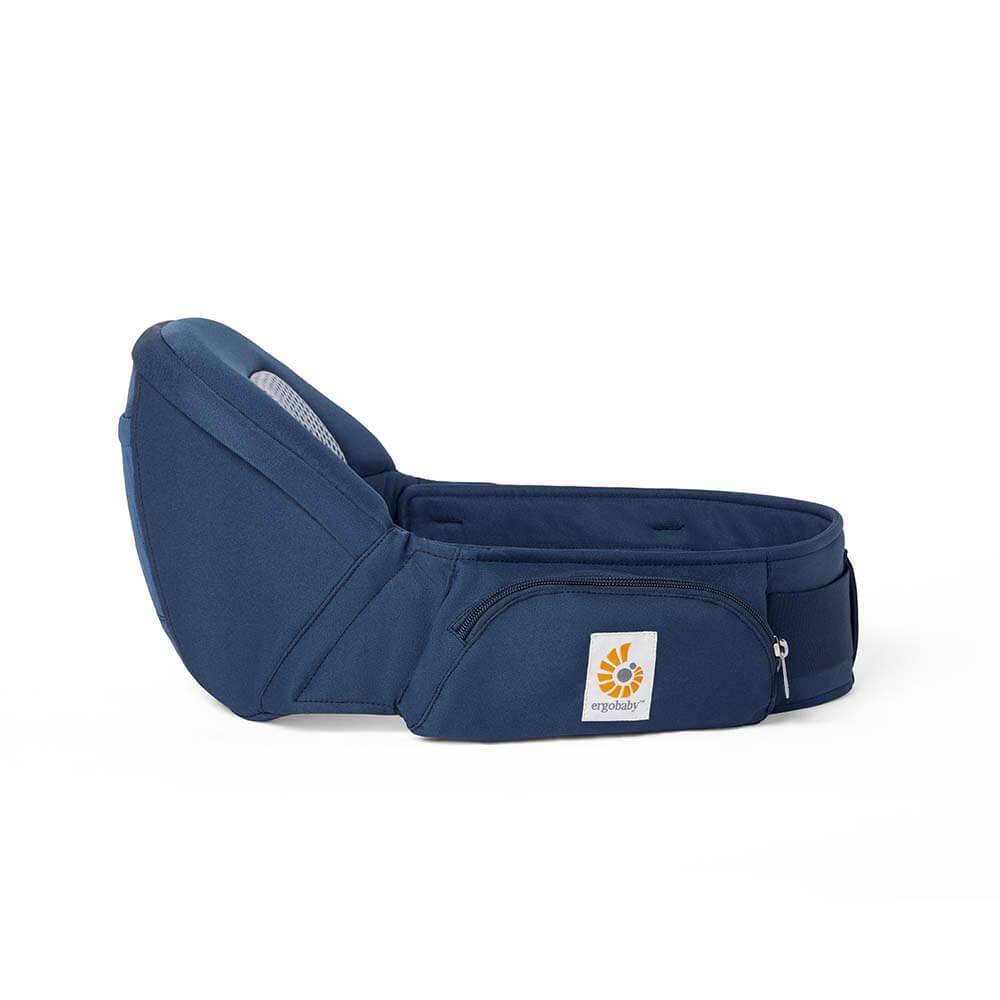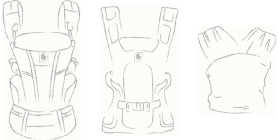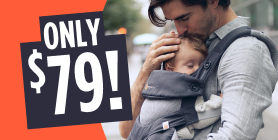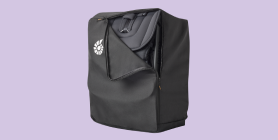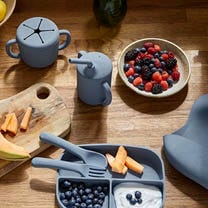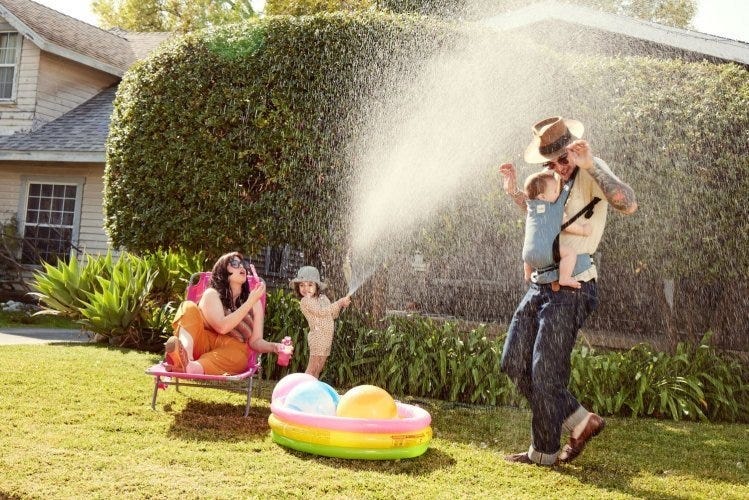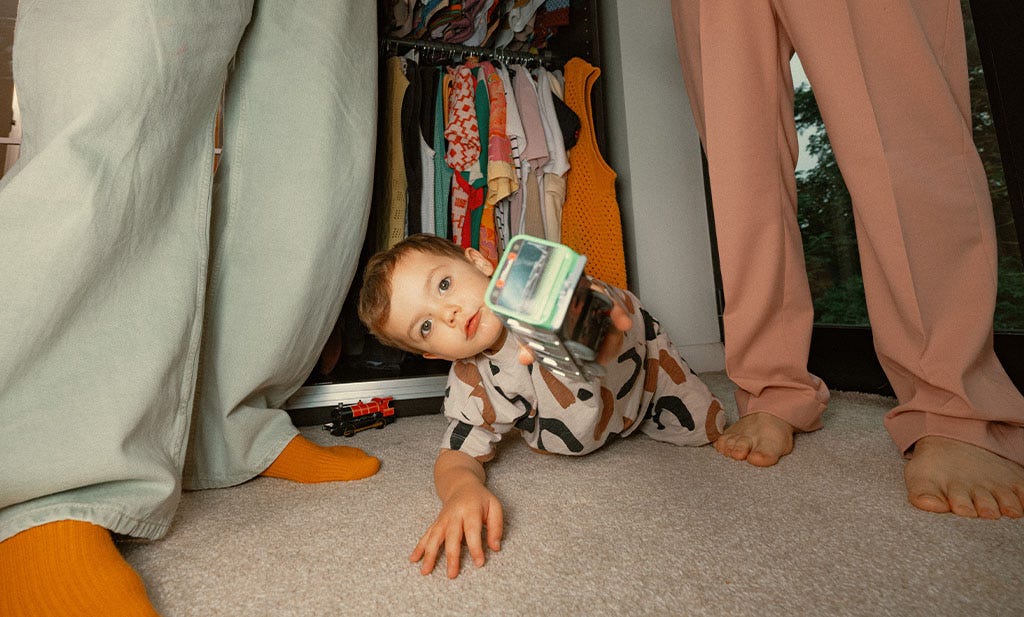
For the last twelve months, we’ve shared monthly installments of our blog series ‘Baby’s developmental milestones with Ergobaby: baby’s first year’, together with our midwife Katrin Ritter. We shared which baby milestones your baby will go through and when, what is important for healthy baby development in each month and what you can look forward to in the near future.
What was your most exciting or most moving milestone on the way from birth to the moment your baby took their first steps? Was it the first milestone in your baby's development, the first smile? Or was it the moment when your little one went into symmetrical hand support and they balanced themselves for the first time? Or the all-important milestone at the end of the ninth month: crawling? I’m sure you have an anecdote or two for every stage! We have a little reminder for you so that you can look back on all the big milestones:
- Milestone (from the sixth week): The first smile
- Milestone (6th-8th week): Beginning head control
- Milestone (end of the 3rd month): Symmetrical elbow support
- Milestone (end of the 4th month): Single elbow support
- Milestone (end of the 5th month): Reaching out and over the centre
- Milestone (end of the 6th month): Symmetrical hand support
- Milestone (end of the 7th month): Commando crawling
- Milestone (end of the 8th month): Leaning (propped up) seat
- Milestone (9th to 10th month): Crawling
- Milestone (end of the 10th month): Half-kneeling position
- Milestone (9th to 14th month): Free standing
- Milestone (13th-14th month): First steps
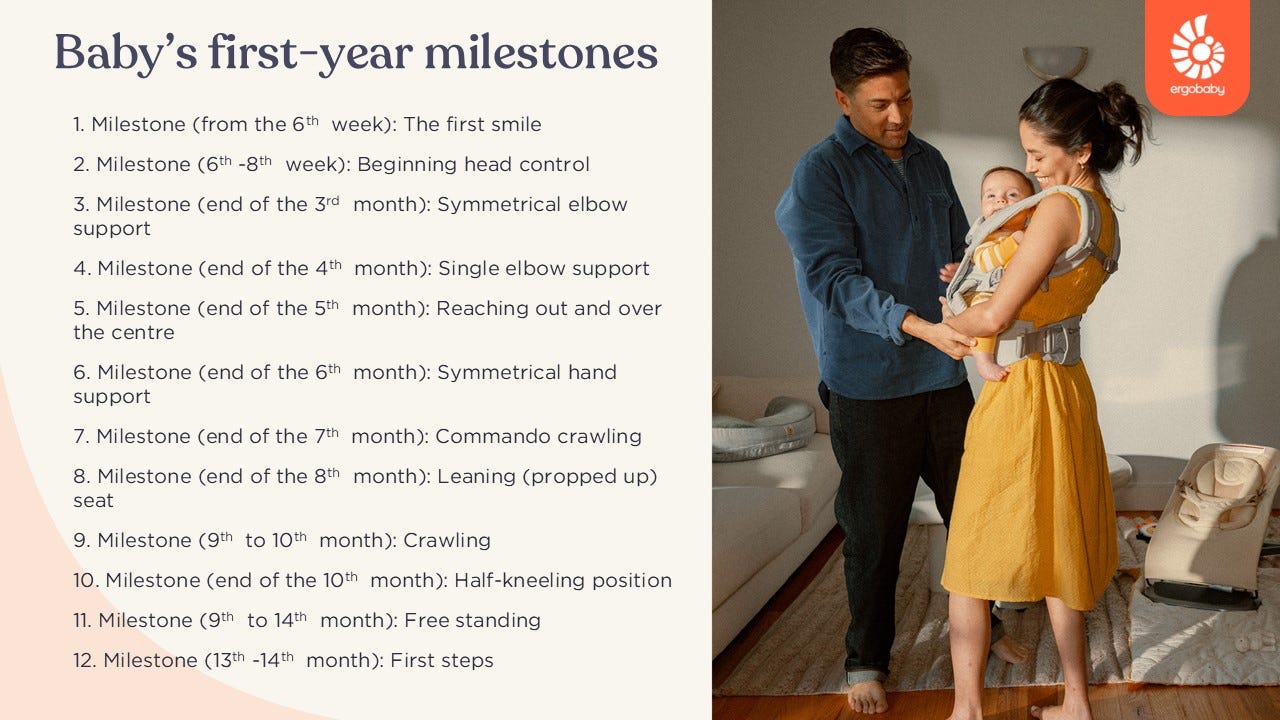

Baby milestones are followed by toddler milestones
It's remarkable how important every step in your baby's development, no matter how small, is for their further physical and mental development. How everything is somehow connected and everything contributes to that big goal: walking. Of course, your baby's development doesn't stop there. Even after the first birthday, something new happens in your little one's body and mind every month, every week, in fact every day. However, these advances are no longer so easy to identify, as they happen simultaneously on many different levels and are very much dependent on the environment in which your toddler finds themself.
Toddler milestones 1st to 3rd year of life
Between the first and third year of your child's life, you will observe that your child gradually acquires the following skills:
- Standing on one leg for a short period
- Jumping from a step with both legs
- Running and dodging
- Walking backwards
- Riding a balance bike
- Putting on and taking off shoes
- Eating mostly spill-free with a spoon
- Stringing beads
- Speak about 300 words
- Use their own name or the first person form when speaking
- Jumping with both legs at the same time
Preschool developmental milestones from 3 to 6 years of age
Between the ages of three and six, you will notice that your child gradually masters the following:
- Rolling their feet when walking (after developing the arches of their feet, without bow legs and knock-knees)
- Walking up and down stairs in alternating steps
- Tumbling and jumping jacks
- Riding a tricycle, scooter and bicycle
- Side stepping and skipping
- Holding a pencil correctly when colouring (if they have been shown how)
- Recognising emotional vocalisations
- Dressing and undressing independently
- hopping forwards on one leg
- developing right- or left-handednes
Preschool developmental milestones between the ages of 4 and 6
Around the age of six, your child will then be able to (provided you have practised this)
- colour in colouring books neatly
- tie a bow
- pronounce all sounds correctly
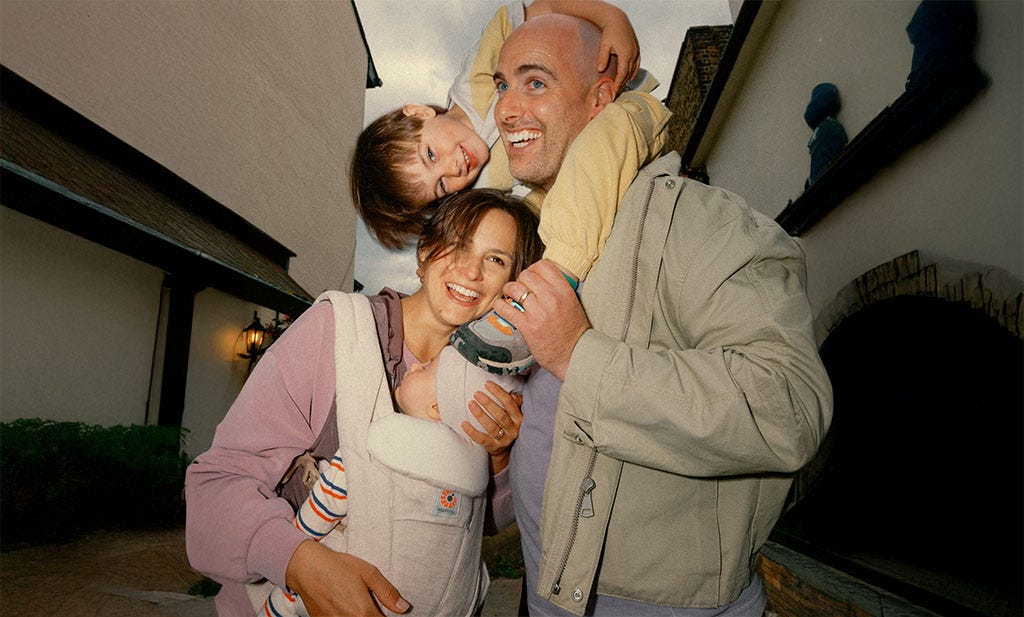

FAQs about baby milestones & toddler milestones
To round off our blog series, we would like to take this opportunity to answer a few common questions about baby development:
-
How do I encourage my child's movement development?
First and foremost, it is important that you observe your baby closely and offer them support or stimuli when necessary. But for the most part your baby should discover everything for themselves. Give them the time they need. If you want to encourage movement patterns that you observe them making, you can provide stimuli through play. This works best after nappy changing and feeding, when baby is rested and full. As your child enjoys success, you can offer the same exercise or game over and over again. This boosts self-confidence. Carrying your child in a baby carrier also promotes development: your child feels your movements particularly intensively and trains their body and mind. When you put them down afterwards, these impulses continue to have an effect. This is called motor learning.
-
Is the prone position really as important as everyone says?
The short answer is - yep. Even if your baby doesn't like it that much, you should encourage it through play. After all, it is from the prone position that movement begins in the first place. All important muscles are strengthened by the prone position, e.g. abdominal and shoulder blade muscles and of course the important neck muscles. It is the first stage of active straightening and is therefore very important. Coordination, endurance, strength and balance are also practised in this position.
-
Should I actively sit my child up if they are increasingly lifting their head while lying on their back?
If your child is lying on their back and regularly lifting their head, then they are simply curious. It doesn’t mean that they are ready to sit. A better plan would be to turn baby onto their tummy so that they can explore their surroundings in an age-appropriate way. Active sitting down will later take place via a lateral rotation movement and your child will do this on their own.
-
Can I actively practise sitting with my child by having him pull himself up on my fingers?
As we mentioned above, your baby will move into a sitting position on their own when their muscles allow it. This is achieved through a rotational movement and by supporting themself, not pulling itself up. Pulling up straight also trains the wrong muscles.
-
Is it ok if my child skips crawling?
Sometimes baby seems to skip crawling and learns to walk straight away. However, this is likely not a good thing. For healthy development, all milestones should be completed in full and in sequence. If a child skips crawling, this is usually a sign that the parents have intervened passively too often, for example by actively sitting their baby down too early. The following skills are promoted by crawling:
- Hand-eye coordination
- Hearing, seeing and moving are combined
- Sense of touch and pressure on the hands allow the child to feel itself and the ground to get a sense of space
- Rhythm and sense of movement are refined
- Strengthening of the core muscles
- Your child develops a feeling for their arms, upper body, pelvis and legs
- They can later learn to ride a bike and swim more easily
- Last early childhood reflexes are integrated
-
My child only walks on their knees - should I ignore it or stop it?
Knee walkers often lack the hip extension to walk upright. This is usually due to hyperflexible ankles. These children also often tend to hyperextend their knees. In order to compensate for these hypermobile joints, there is a lack of movement in the hip joints. So it's best to talk to your paediatrician if your child often walks on their knees.
Time, space and love for healthy baby milestones & toddler milestones
Whether baby milestones, toddler milestones or beyond - for all stages of development, it is important that you give your children the time they need. You can lovingly and playfully encourage them in whatever they are interested in or simply give them the space to play freely. Give them stimuli, but let them experience and try things out for themselves. Let your children smell, taste, see, hear and feel. Provide them with an environment in which they can develop safely and securely because they know that you are there for them when they need you. Then watch with pride as your babies grow into healthy and happy children.
Factors to Consider:
- Baby’s Age and Weight: Ensure the carrier is appropriate for your baby’s size and weight. For example, Ergobaby’s Embrace Newborn Carrier is perfect for the fourth trimester where baby is small and you’re looking for an easy way to stay close. As they grow, you’ll want to upgrade to an all-position carrier that’s meant for growing babies.
- Parent’s Comfort and Ergonomics: Look for carriers with padded shoulder straps and lumbar support if you’re planning on longer outings.
- Ease of Use: Choose a carrier that is easy to put on and take off.
- Climate and Breathability: Opt for carriers made of breathable fabrics to keep you and your baby cool in hot weather.
Safety Tips:
- Proper Positioning: Ensure your baby is seated correctly, with their legs in an "M" position and their head should be close enough to kiss.
- Checking for Wear and Tear: Regularly inspect your carrier for any signs of damage.
- Ensuring Adequate Support: Make sure the carrier provides proper support for your baby’s head and neck.
Exploring Nature with a Baby Carrier
Ideal Spots for a Nature Walk with Baby
- Parks and Gardens: Great for leisurely walks and picnics.
- Nature Trails and Forests: Perfect for more adventurous outings.
- Beaches and Lakesides: Wonderful for enjoying the water and sand, with the right carrier.
Activity Ideas
- Hiking: Enjoy a scenic hike with a hiking baby carrier that offers support and storage.
- Bird Watching: Use your carrier to keep your baby close while you explore and observe wildlife.
- Picnics: A carrier can free up your hands, making it easier to carry picnic supplies.
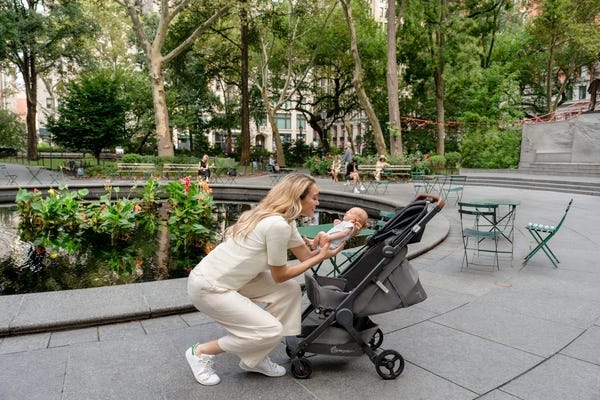

Advantages of Using Strollers for Nature Adventures
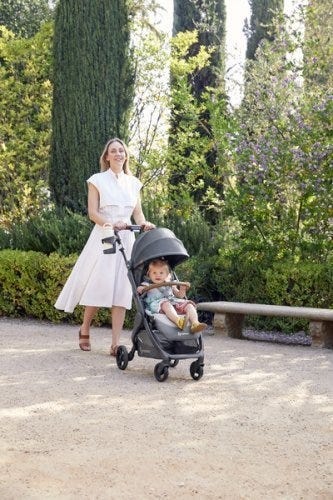

While baby carriers are fantastic for mobility and closeness, depending on the adventure of choice you might want to be a stroller along too.
There are a LOT of baby stroller options on the market. So we understand how confusing it can be to choose the one that’s right for your family. Not only are there a variety of brands, but a variety of strollers that serve different purposes.
There are a few types of strollers on the market:
- Full-sized stroller: This is typically the stroller parents thing of buying for all its versatility.
- Lightweight or umbrella stroller:These compact strollers are perfect for on-the-go adventures.
- Jogging stroller: Designed for parents who want to combine fitness with outdoor adventures.
- Double stroller: Designed for parents with multiple kids, especially twins.
- Car seat carrier: These strollers connect to a specific car seat. We don't typically recommend these as they can be unsafe for baby and uncomfortable for parents who are pushing.
Learn more about the types of strollers and which one would be best for you.
Benefits of Bringing a Stroller
- Storage Space for Gear: Ample room for carrying all your essentials like a diaper bag, beach toys and more.
- Shade and Weather Protection: Built-in canopies to shield your baby from the sun when they are lounging.
- Options: If you have more than one kid, you can stroll with one and carry the other. Or, if you’re getting warm or your little one is getting fussy, you can switch up their position from stroller to carrier or vice versa.
Safety Tips for Strollers
- Ensure your stroller is in good working condition. Make sure buckles are still buckling and that there are no rips or holes that could compromise your baby’s safety.
- Use sunshades or bug nets to protect your little one’s skin.
- Securing the baby properly: always buckle up your baby for safety even if you think they are old enough to go without the buckle.
Combining Baby Carriers and Strollers
For the ultimate flexibility, consider using both a baby carrier and a stroller on your outings.
Combining both options allows you to adapt to different situations. Use the carrier for more rugged trails and switch to the stroller for smoother paths or when your baby needs a nap.
Transition Tips
- Smooth Transitions: Plan stops where you can easily switch from carrier to stroller.
- Pack Light: Only bring essentials to make transitions easier.
Tips for a Successful Adventure
Planning Ahead
- Route Planning: Choose baby-friendly trails and parks. Check local mom groups or outdoor groups and get recommendations for the best outings for kids.
- Check Weather Conditions: Avoid extreme heat or unpredictable weather. Even with our most breathable carriers, when it’s hot, it’s hot. And having two bodies against each other in the heat will be naturally hot and sticky already.
- Packing Checklist: Include diapers, snacks, water, sunscreen, and a first-aid kit. These all-position carriers have storage pockets where you can fit some of the items easily!
- Stay Hydrated and Nourished: Pack healthy snacks to keep energy levels up and bring plenty of water for both you and baby.
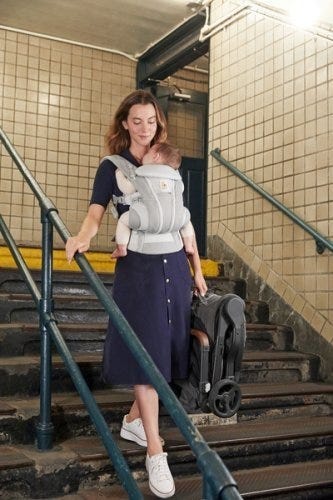

Summer adventures with your baby are a wonderful way to create lasting memories and enjoy the beauty of nature together. From baby carriers to strollers, Ergobaby products are designed to provide comfort and ease for both you and your little one. So, gear up, get outside, and explore the world with your baby by your side.
Ready to embark on your own summer adventures? Check out Ergobaby’s range of baby carriers and strollers to find the perfect match for your family’s needs. Visit our website today and start planning your next outdoor excursion!

